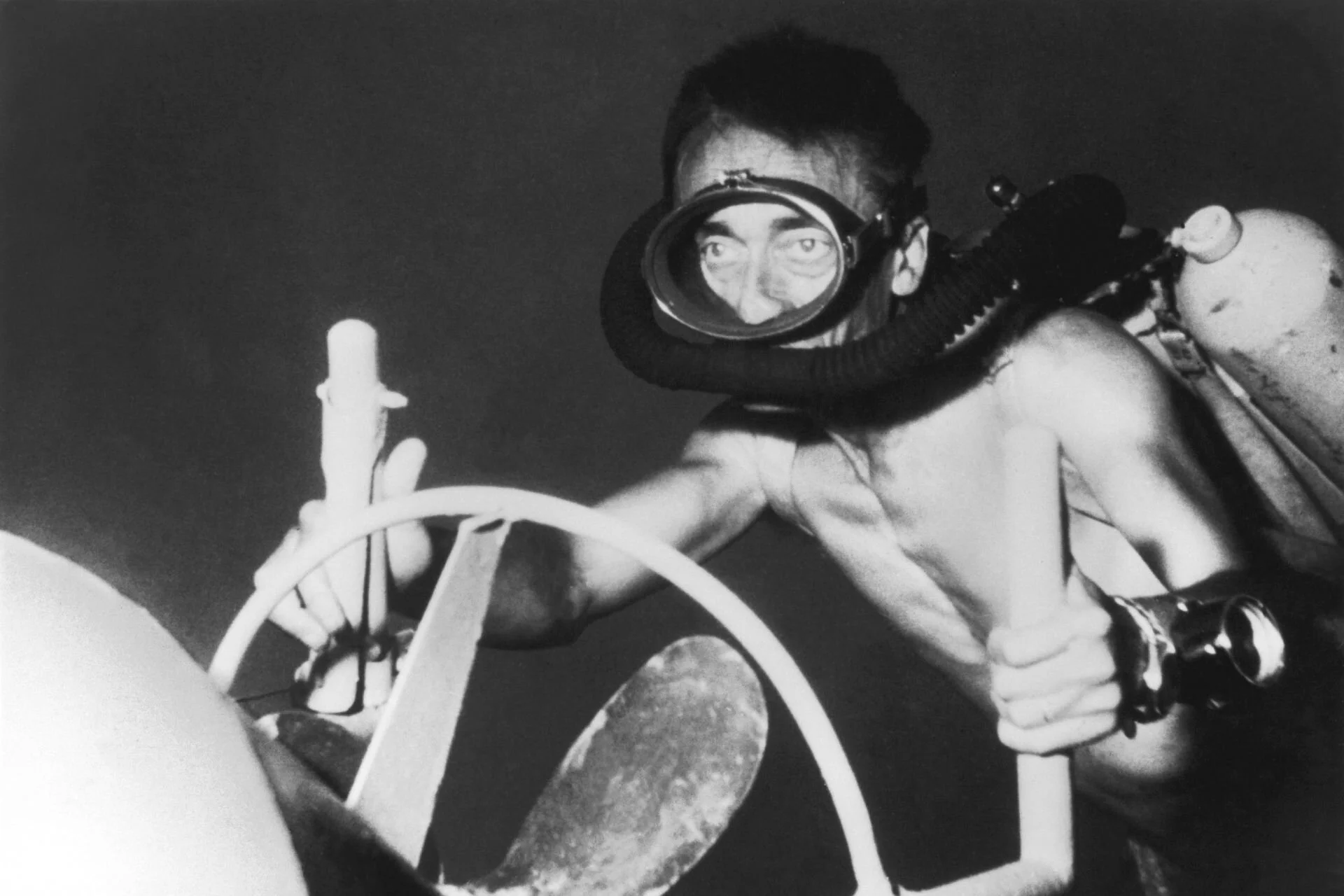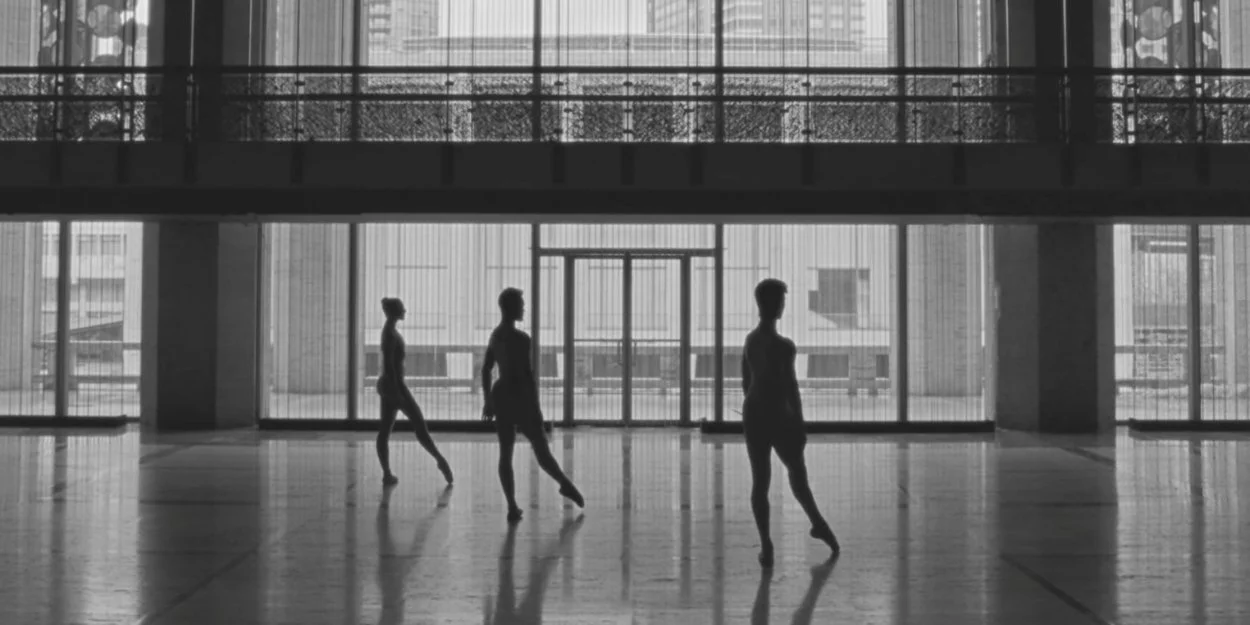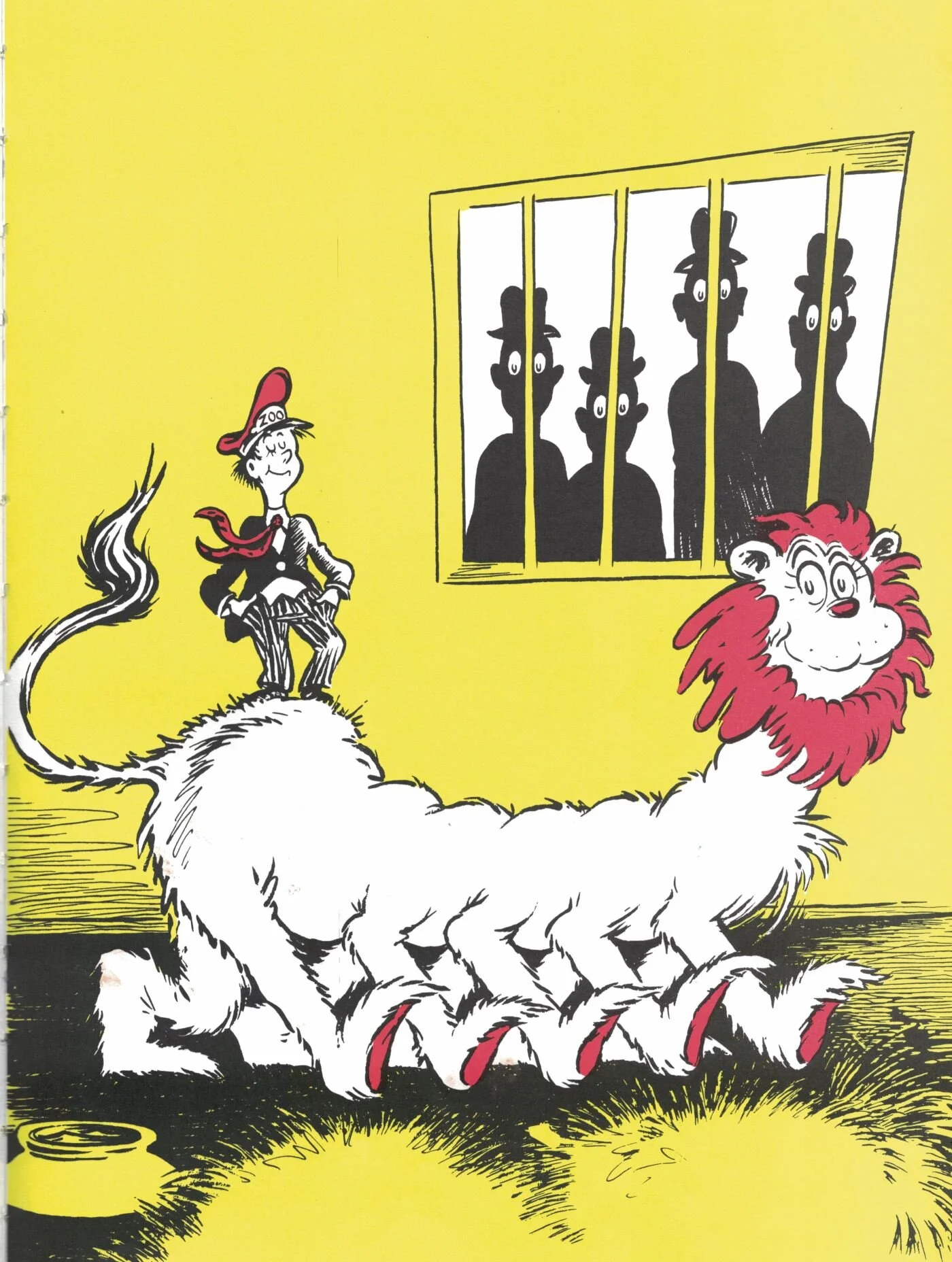The Spectator, May 2021
While a few went to the Moon, Jacques Cousteau was opening the oceans to all.
For a few years in my youth, I tried to be a scuba diver. In the deep pool of the 63rd Street Y, I learned how to clean my goggles and clear my air regulators. In a lake in upstate New York, I earned my certification by swimming around a junked car in 40 feet of murky water. I went on to dive to some cold wrecks in Rhode Island and to swim among the warm sea life of Key Largo. But it wasn’t for me. The bobbing boats and the heavy equipment caused much discomfort. In one dive I banged my head against the tank of my divemate and nearly got knocked out. It was all less elegant, and quite a bit more involved, than I had expected.
My inspiration, of course, had been Jacques Cousteau. The French underwater explorer dived the world’s oceans a generation ago as both celebrity and icon. His ubiquity then is now only matched by his cultural absence today. Since his passing in 1997 his reputation has sunk, much like his beloved ship Calypso.
There was always more beneath that red knit cap. For those of us brought up on the compressed air of The Undersea World of Jacques Cousteau, his primetime series broadcast from 1966 through 1976, and The Cousteau Odyssey, its PBS follow-up of 1977-82, the gaseous emissions of these environmental ‘reality’ shows can cut against the true reality of a philandering adventurer who found his share of trouble both under the surface and under the covers.
The Silent World — Le Monde du silence — Cousteau’s early landmark film of 1956, presents an artful submersion into his lasting achievements. Codirected by the 23-year- old Louis Malle, who went on to give us My Dinner With André and Au revoir les enfants, the film won an Oscar and the Palme d’Or at Cannes — the only documentary to receive both honors.
With Malle behind the lens, The Silent World revels in the abstractions of the depths. Created at the dawn of the space age, the film shows us an alternative space, equally mysterious, more sensual, far more palatable, with the tricolore fluttering from the mast of Calypso hundreds of feet above. In its accented voice and imagery, The Silent World has become so iconic, so repeated, even so parodied that it is all the more remarkable to view its scenes in their original presentation. Unlike Cousteau’s later television work, the film is now widely available online. Sixty-five years on, it deserves a deeper dive.
The Silent World opens with a pop. A balloon covering an underwater flare inflates and explodes. The divers of Calypso descend holding their burning red torches. Perrier-sized bubbles of noxious gases rise to the surface like rocket exhaust.
‘These divers, wearing the compressed air aqualung, are true space men, swimming free as fish,’ begins the narration. ‘These are the divers of the Calypso, the research ship of the undersea explorer, Captain Cousteau.’ The cameras, the lights and the mobile air regulation were all as new as moon suits. Much of it had been developed and refined by Cousteau himself since World War Two, when Lieutenant Cousteau and the engineer Émile Gagnan tested their first aqualungs, the early scuba design that freed divers from the copper suits, leaden feet and heavy lines then required to pump air down from the surface.
Like its namesake nymph who detained Odysseus, Calypso captivated Cousteau just as it transported a world audience. The malt magnate Thomas Loel Guinness bought the American-made minesweeper from a ferry company in 1950 and leased it to Cousteau for a franc a year. The arrangement was not revealed until after Cousteau’s death, all on the understanding that Cousteau would never ask Guinness to fund his adventures. Instead, bankrolled and maintained by Simone Melchior, his beleaguered wife who sailed on every voyage but never appeared onscreen, the ship received a viewing pod riveted to its prow and oceanographic and videographic equipment outfitted bow to stern.
Cousteau was a promiscuous fundraiser as much as he was a precocious adulterer. Before the launch of his environmentalist Cousteau Society in 1974, his major funders were oil companies out to develop deep-sea drilling. His ‘Conshelf’ undersea pods of the 1960s were prototype saturation platforms, allowing divers to live and drill for oil at depth without the dangers of decompression. In the 1950s, British Petroleum and the Compagnie française des pétroles sent Cousteau to the Trucial Coast, where some tiny sheikdoms were about to taste the Texas tea lapping beneath their Arabian sands. It was this exploratory voyage, through the Mediterranean and Red Seas, the Persian Gulf and the Indian Ocean, that provided the two years of footage used to create The Silent World.
A flâneur of the fishy realm, Cousteau would as soon eat, pickle, lacerate, cage, torture or blow up his discoveries as protect them. In The Silent World, he manages to document each one of these achievements. In one scene, he and his crew dive for spiny lobsters to make a shipboard feast. As it turns out, most of the lobsters were purchased at a market in Marseille. Meanwhile a related plot device regarding nitrogen narcosis was made up out of thin air. In another scene, flying fish land on the Calypso’s deck. ‘In the morning,’ Cousteau explains, ‘we simply pick them up for breakfast. They are very tasty.’
For Cousteau, scientific investigation, combined with the potential for good image-making, presented an unavoidable hazard to sea life. In The Silent World, he and the crew hitch rides on sea turtles and stand on giant tortoises. He locks up an annoying grouper he nicknames Ulysses in a shark cage.
‘In order to take back a brief sampling of the reef,’ he says, ‘we must unfortunately cause some damage.’ What that means here is the use of underwater dynamite. ‘For the purpose of scientific study, it is the only method for taking a census of all of the varieties in an area,’ he says, detonating an explosive that shatters all the fish in the area.
‘For every 10 fish killed, only one or two float to the surface. The rest sink with injured air bladders, and only divers can collect them all. At the bottom we swim into a tragic scene.’ The tragedy ends as a gasping puffer fish, filled with water, disgorges its final gulp. ‘When this puffer fish is in danger, he inflates himself with water so the enemy can’t swallow him. But the trick does not work against dynamite,’ Cousteau concludes.
The most startling scene of The Silent World concerns the crew’s encounter with a large pod of sperm whales. One of his crew-members, Cousteau explains, wants to fulfill his dream of harpooning a whale. The Calypso then steers too close to the pod and rams one of the creatures with its underwater observation room. ‘We’ve crashed into a whale. I listen to its cries of distress,’ says Cousteau. ‘Then just before our eyes the drama becomes a tragedy.’ In ‘childish carelessness’ a whale calf falls behind the pack and is lacerated by Calypso’s propeller. ‘We speed up to harpoon him. We must put the whale out of its misery. The little whale fights bravely to keep up with his parents. The baby cannot be saved. We all feel very bad about the baby whale. Dumas gets his rifle and makes a merciful end to his suffering.’
But that’s not all the drama. As the whale’s blood spills through the water, dozens of sharks begin to circle the fresh carcass. The first bite ‘is the signal for the orgy to begin,’ says Cousteau. ‘Every seaman hates the shark. After what we have seen, the divers can’t be held back. They get anything they can to avenge the whale.’ After killing the whale, the Cousteau crew then hauls the sharks on board to bludgeon them with the blunt ends of their axes. In a final, comic scene, a diver sticks a suckerfish to the back of another seaman.
In 2004, Wes Anderson released The Life Aquatic with Steve Zissou, a film that tanked at the box office despite an all-star cast and lavish budget. One reason the film may have failed to find its audience is that this send-up of Cousteau, played by a dyspeptic, thin-skinned, money-grubbing Bill Murray, seemed so unlike the beloved Cousteau we thought we knew. As it turns out, the film portrayed Cousteau more honestly than Cousteau did himself.
The ownership of Calypso was not the only secret the diver maintained in life. He also kept a secret family and married his much younger mistress upon Melchior’s death in 1990. As his philandering has come to the surface, the dysfunction exhibited between the two sides of the family has divided the Cousteau legacy and kept Calypso rotting in dry dock after it was sunk and salvaged in the port of Singapore in 1996. A 2016 French biopic called L’odyssée took even more air out of Cousteau’s reputation, focusing on the troubled relationship he maintained with his sons — leading up to the death in 1979 of Philippe Cousteau, who died while piloting the Calypso II, the PBY Catalina flying boat that featured in the opening credits of the television series.
Jacques-Yves Cousteau was the boulevardier of the oceans. He explored the seas as a post-Napoleonic savant. He told its story as a latter-day Jules Verne. He was not, as it turns out, a saint in life. But nor should he be seen as a sinner in death. Cast aside our Anglo morality, our enviro-puritanism, and the Cousteau who bubbles up is, simply put, French.







